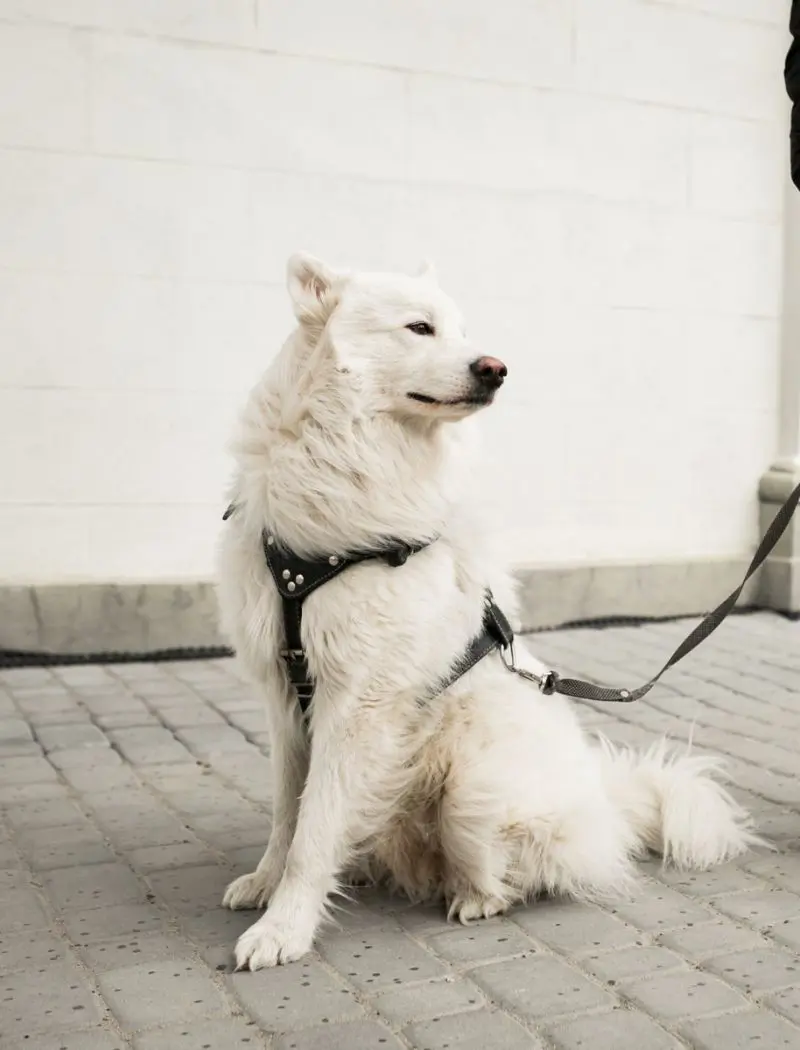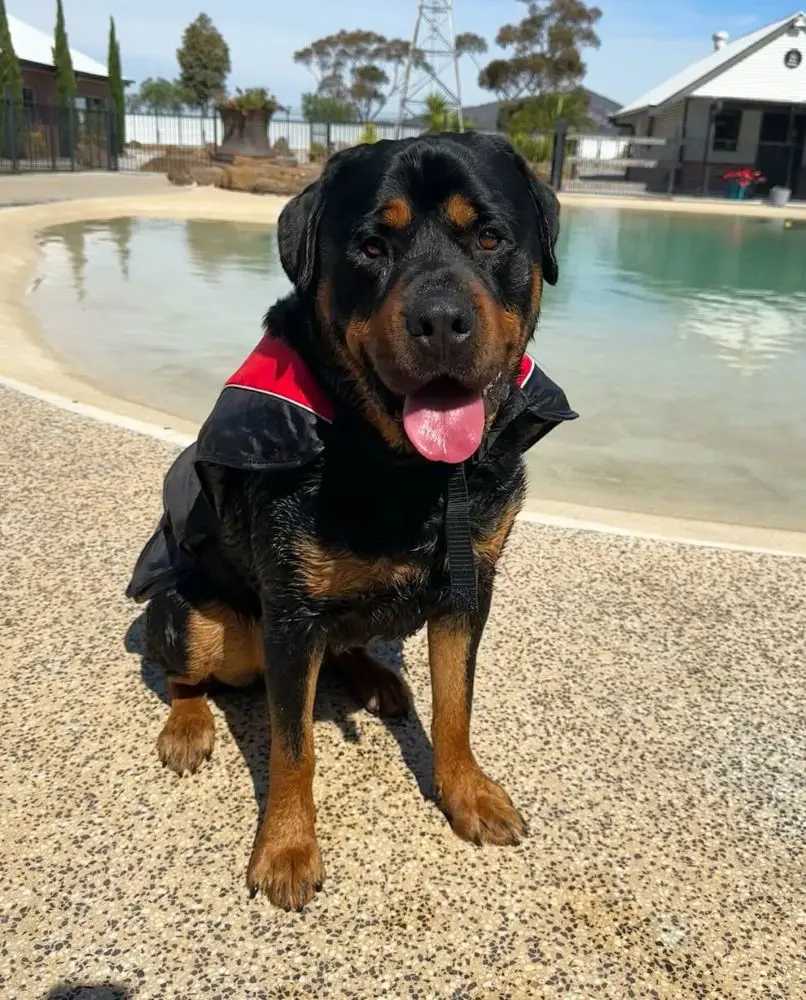Do Dogs Cry? What Does Their Tears Mean
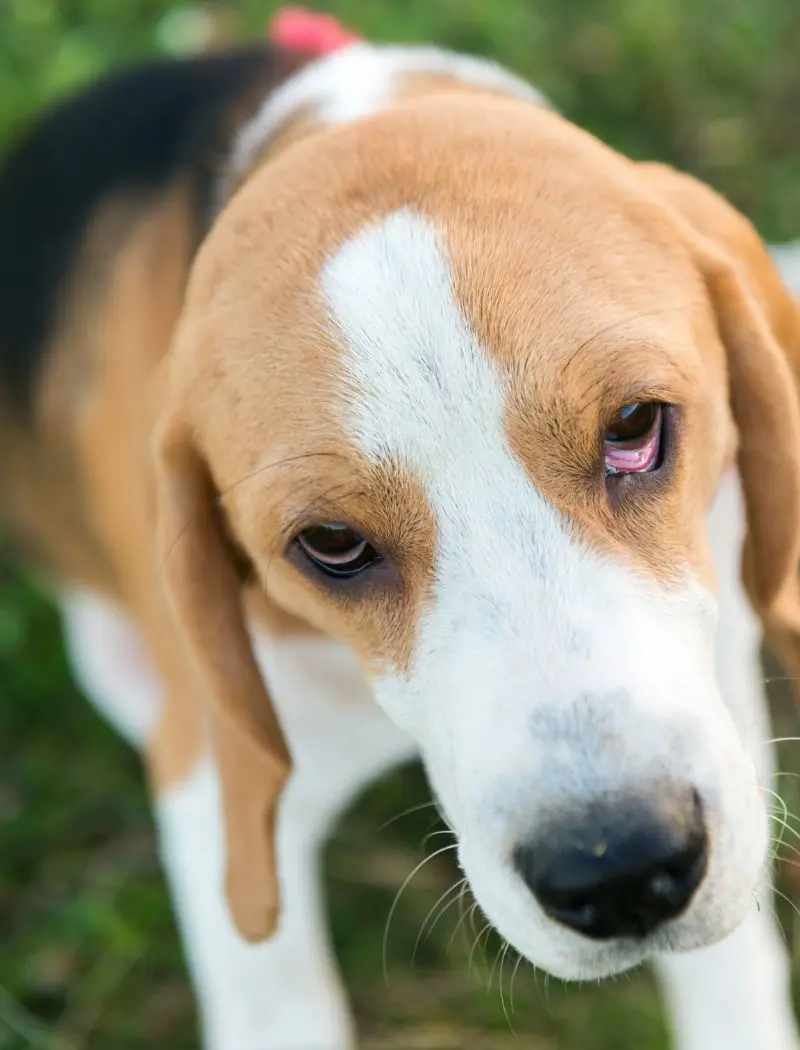
Dogs are known to shed tears as a way to lubricate their eyes and not because of sadness or emotional pain like humans. Tears in dogs may indicate medical issues like eye infections or blocked tear ducts that may cause discomfort to them.
It is very important to catch the signs of tears in dogs so that you can keep them healthy and provide proper care or treatment as per the severity. This article discusses the causes of tears in dogs and what they mean.
1. Allergies
Allergies can make a dog's eyes water when they come into contact with substances like pollen or dust as their body releases chemicals that cause irritation. They produce tears in response to the chemical as a way to protect themselves by washing away the irritant.
This extra tear production can make their eyes look red or puffy and they may even scratch their eyes to relieve the unease. Dogs may also show other signs of discomfort such as sneezing, coughing, or scratching their skin, resulting in even worse conditions.
2. Eye Infection
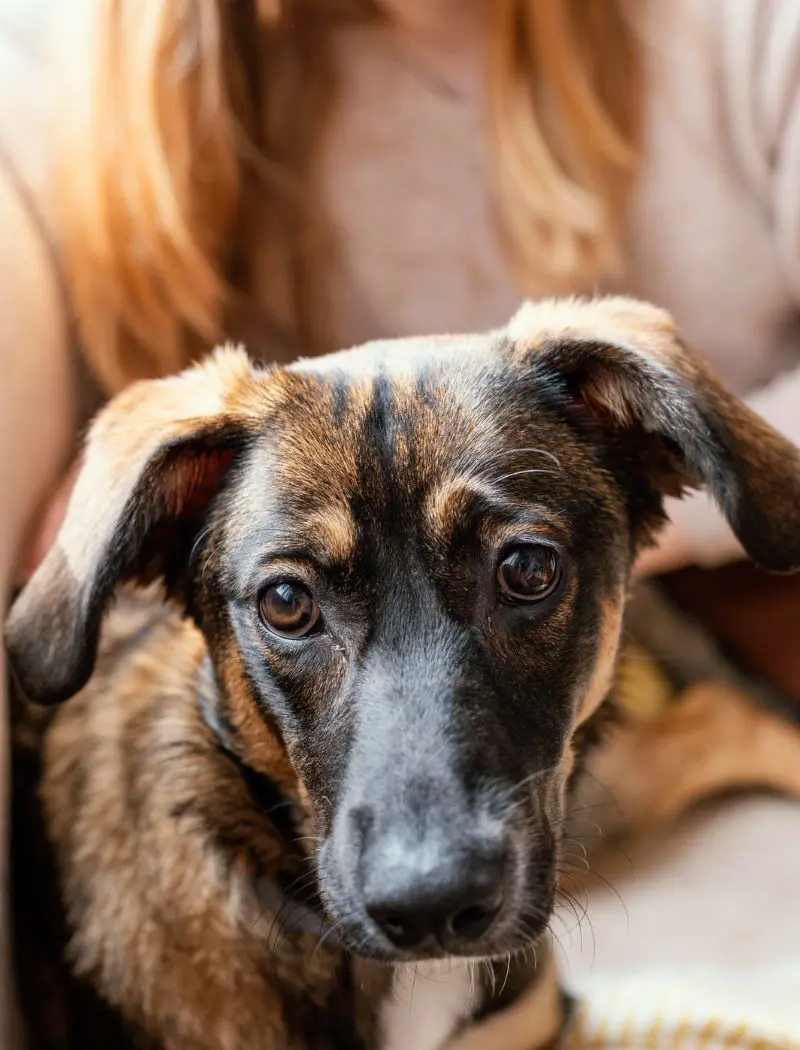
Invasion of bacteria or viruses can make the eye swell, triggering more production of tears in an attempt to flush out harmful germs and keep the eye clean. The extra tears are a way for their body to try and clear the infection, similar to how human eyes water when exposed to irritants.
Conditions like conjunctivitis can also cause this condition in which the tear produced may become thick and yellow or green if it is caused by bacteria. Viral infections like canine distemper can also cause watery eyes as part of the immune response and may affect the whole body.
3. Blocked Tear Ducts
Blocked tear ducts occur when the tiny passageway that clears tears from the eyes into the nose becomes obstructed. These ducts are responsible for draining the tears produced into the nasal route to keep the eye wet and bright, but the blockage overflows the tear onto the dog's face.
A buildup of dirt or dust can cause a blocked tear duct that can prevent the normal tear flow. Infections in the eye or around the tear duct can also result in blockages that can cause inflammation or swelling in the area. The trapped tear can cause irritation in the skin which can further cause discomfort if the blockage is not addressed in time.
4. Dry Eye

Dry eye is a condition where the eyes do not generate tears to keep them properly greased, leading to sensitivity and unease. The body usually tries to compensate for the dryness by producing more tears that are not of the right texture and do not provide proper moisture or protection.
The tear glands of dogs with dry eyes fail to produce enough watery components of tears, which is necessary to keep the surface of the eye moist and clean. The watery eyes seen in dry eye cases are a result of the eye trying to overcompensate for the lack of moisture and is not sufficient for proper eye health.
5. Eye Injury
A dog with an eye injury may suffer from sensitivity or agitation that triggers glands to release more tears to clear the visual organ and protect it from further harm. It helps to flush out any debris or microbes and provides dampness to the injured area.
The dog's eyes may appear excessively watery and the area around the eye becomes flushed. They may also try to squint, paw at the eye, or become more sensitive to brightness, depending on the intensity of the trauma. It is important to treat this condition in time as it can lead to complications that may permanently damage the eye and affect vision.
6. Breed

Breed-specific conditions can make certain dogs more susceptible to teary eyes due to their unique physical characteristics. Breeds with short noses and flat faces like pugs are more likely to experience watery eyes as their facial structure can make tear ducts too narrow or not function properly, causing tears to overflow onto the face instead of draining normally.
The tear ducts of these breeds may not be able to match the production of eye fluid, leading to constant wetness around the eyes. They are also susceptible to eye conditions such as conjunctivitis or dry eye due to the shape of their eyes and the reduced ability to fully close their eyelids.
7. Environmental Irritants
When a dog's eyes are exposed to environmental irritants such as smoke, perfumes, or cleaning chemicals, the eye responds by producing fluid to wash away the germs and protect the sensitive skin. They may also cause other symptoms such as sudden exhalation, coughing, or redness.
These dogs may also squint or paw at their face to relieve the unease caused by the irritants. Continuous exposure to these irritants can make the eye inflamed, leading to further irritation. It is important to keep them clean area free of strong chemicals to reduce the impact of this problem.
8. Age
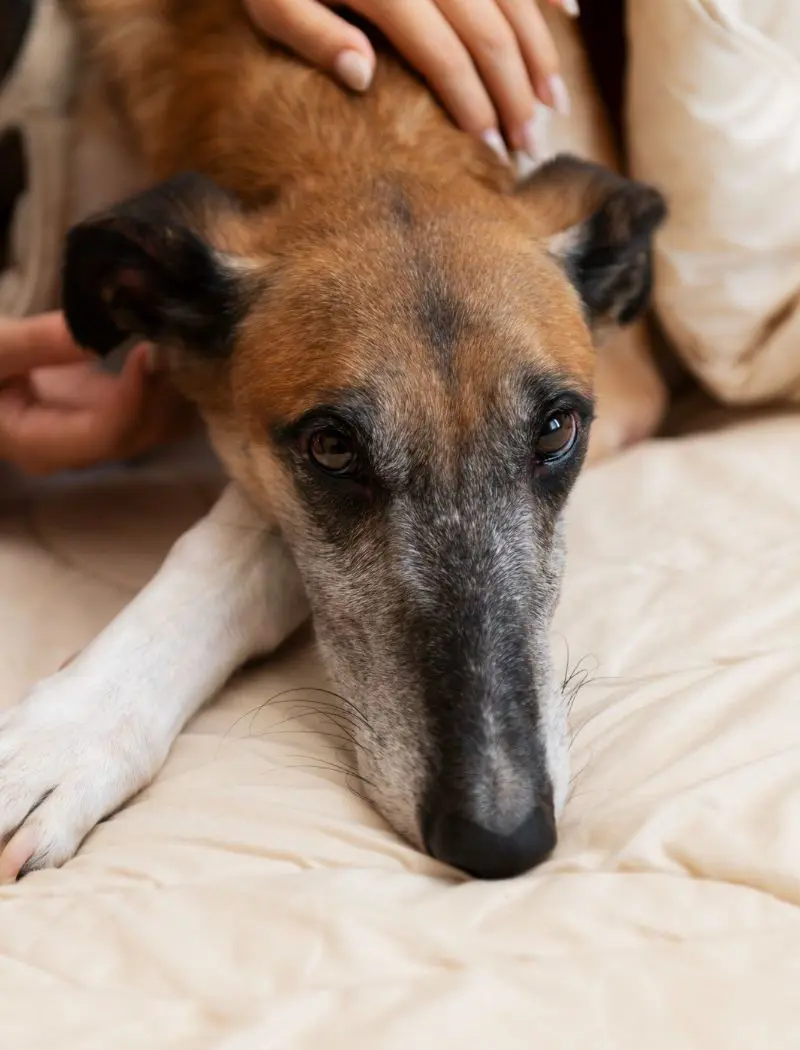
The natural aging process can lead to changes in the structure and function of the visual organs, which can make the eye vulnerable to issues that cause teary eyes. Older dogs experience a decrease in tear production that leads to conditions like dry eye, which makes the eye produce more tears that can overflow.
The tear ducts of such dogs also become less efficient or more prone to blockages, preventing tears from draining properly which may result in buildup and spillover. It may also become narrowed or obstructed due to natural wear and tear which leads to the formation of tears.
9. Stress
The body of a stressed dog may respond by producing excess tears as a result of heightened sensitivity to their surroundings or behaviors like excessive blinking, which can irritate the eyes. They may be stressed due to various reasons like changes in the environment, loud noises, or being separated from the owner.
Watery eyes caused due to stress may be accompanied by other signs of stress like panting, pacing, or whining. This is usually a temporary reaction and resolves once they calm down, but it is important to understand the underlying cause of stress. Make sure to provide a safe, quiet space that helps reduce their anxiety and prevent further discomfort.
10. Poor Diet
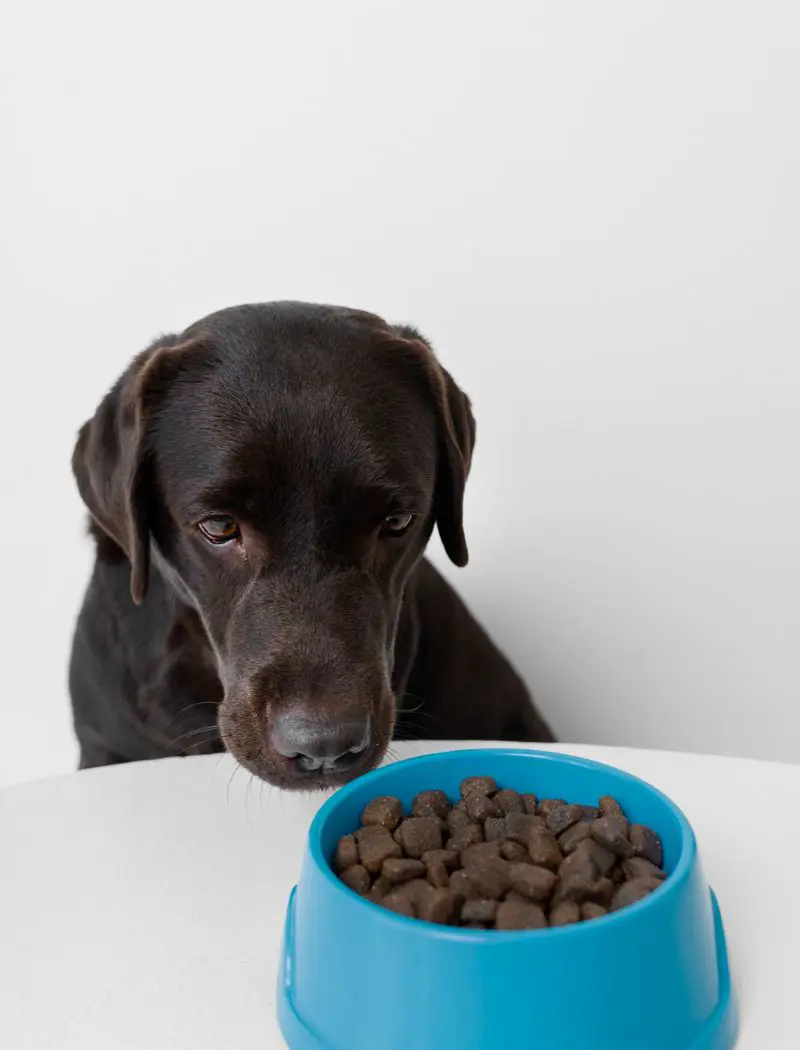
When dogs consume a diet lacking essential nutrients, it can lead to various health issues which also include watery eyes. It is important to provide a diet filled with nutrients like vitamin A to maintain the health of their tear passage. Lack of these nutrients can weaken the eye's natural defense network and lead to irritation that causes excess tear production.
An imbalanced diet can contribute to inflammation in the body, which also includes the tissues around the eyes and makes them more prone to conditions like blocked tear ducts. Poor diet may weaken the connective tissues and muscles that help the eyes function properly, leading to a long-term issue.
11. Cold Weather Or Wind
Cold weather or wind can make the sensitive tissue around the eye dry or irritated. The eyes produce more tears to keep the surface moist and protected from dryness, flushing out debris to prevent discomfort.
Dogs with long hair around their eyes might face more trouble because the wind can push the hair into their eyes and cause unease to them. Dogs with large eyes are more sensitive to such problems as their eyes are more exposed. Watery eyes due to cold weather or wind are usually a sign that the body is trying to protect them, but continuous tearing can signify something else is wrong and needs a vet visit.
12. UV Exposure

Dogs that spend a lot of time outdoors are more at risk of this problem as UV rays can irritate the surface of the eyes to which the body produces tears as a natural way to soothe and shield from further discomfort. Long exposure to UV rays can cause more issues such as sunburn on the eye surface or cataracts, whose first and most visible sign is watery eyes
Dogs with light eye colors or with less pigment around their eyes are more sensitive to UV rays as they have less natural protection against the sun's harmful rays. Limiting their time in direct sunlight during the brightest parts of the day can help prevent this problem.
13. Inverted Or Sunken Eyes
Inverted or sunken eyes can cause moist eyes because of the way the eye is positioned or shaped. It is often due to structural issues in the dog's face or skull that can lead to irritation or difficulty in tear drainage.
Inverted eyes occur when the eyelids turn inward, which causes the lashes and skin to scrub against the top of the eye. This constant irritation can cause discomfort and lead to the production of more tears in an attempt to protect the visual organ. The extra moisture helps to wash away the irritation caused by the inward-turning eyelids.
Sunken eyes happen when the eyes appear to sit deeper in the eye socket due to genetic factors or aging. Eyes positioned farther back in the socket can affect how tears drain as the tear canal may not function efficiently which causes tears to gather and overrun.
14. Cataracts

Dogs with cataracts face difficulty seeing as the lens that helps focus light becomes cloudy and causes them to blink excessively or show signs of unease. Their eyes can start watering more than usual as the body is trying to keep the eyes moist and protect them from further unease.
It can become more noticeable as it advances and you might also see a cloudy or milky appearance in your dog's pupil. One of the main causes of this condition is aging, but it can also develop due to other factors like injury or genetics. They may only affect the dog's vision slightly at first but can lead to complete blindness.
15. Everted Eyelids
It is a condition where the eyelids turn out, away from the visual organs, which causes the inner part of the eyelid to be exposed, leading to several issues. The eye may become dry or irritated and can also make it prone to foreign objects getting inside as the eyelid is not properly covering the eye. This may then cause moist eyes as they try to flush out these irritants.
The condition is often seen in dogs with loose skin or those that naturally have more wrinkled features. Everted eyelids can be a result of aging where the muscles and skin around the eyes weaken over time which causes the eyelids to droop outward.
16. Teething

When puppies start to lose their baby teeth and their adult teeth begin to come in, it can cause discomfort and pain in their mouths and faces. This discomfort sometimes extends to the area around their eyes, which may cause their eyes to water more than usual.
The pressure around the face and mouth during teething can sometimes affect the tear ducts causing them to overproduce tears as a response. It can also cause mild swelling in the gums that can sometimes extend around the face and eyes, pressuring their tear ducts to cause moist eyes. Teething can be an uncomfortable experience that causes crying or squinting, resulting in the production of more tears to lubricate the eye area.
Recent posts
Dogs
What Are Dogs Afraid Of? 10 Common Dog Fears And Phobias
Becoming a dog owner comes with certain responsibilities, including identifying their fears and phobias. From an unpleasant sound to an unfamiliar scent, many factors can trigger a fear response. Understanding a dog's psychology can be complicated; a...
How To Put A Dog Harness On: Step By Step
A dog harness is a popular and safe alternative to a neckband that is designed to distribute pressure more equally across the structure while walking or running. They are worn around the chest and torso, making them a comfortable option for many dogs...
15 Webbed Feet Dogs Breeds That Can Swim
Dogs often become excited when they are near a water body like a pool, river, or beach. Unlike cats, canines are not wary of water and are usually seen enjoying their swims at their nearby water hole. However, enthusiasm alone doesn't dictate a dog's...
20 Fun Activities For Dogs During Winter
Winter can be a great time to embrace the chilly season with creative activities that keep your furry friend happy and entertained. They provide a perfect opportunity to explore unique ways to bond with your dog. From snowy outdoor experiences to coz...
How To Introduce Baby To Dog: A Step By Step Guide
Adding a new baby to your home is exciting, but it can also be a big change for your dog. A dog's natural curiosity involves a patient, prepared, and considerate introduction to a newborn baby. A smooth transition is important for the safety of your ...
20 Haircut For Pomeranian Dog Breed
Pomeranians along with their lively personalities are also well known for their luxurious and dense fur. They are attractive, charming, and confident dog species that require proper care for their fur. There are several grooming styles for these dogs...

